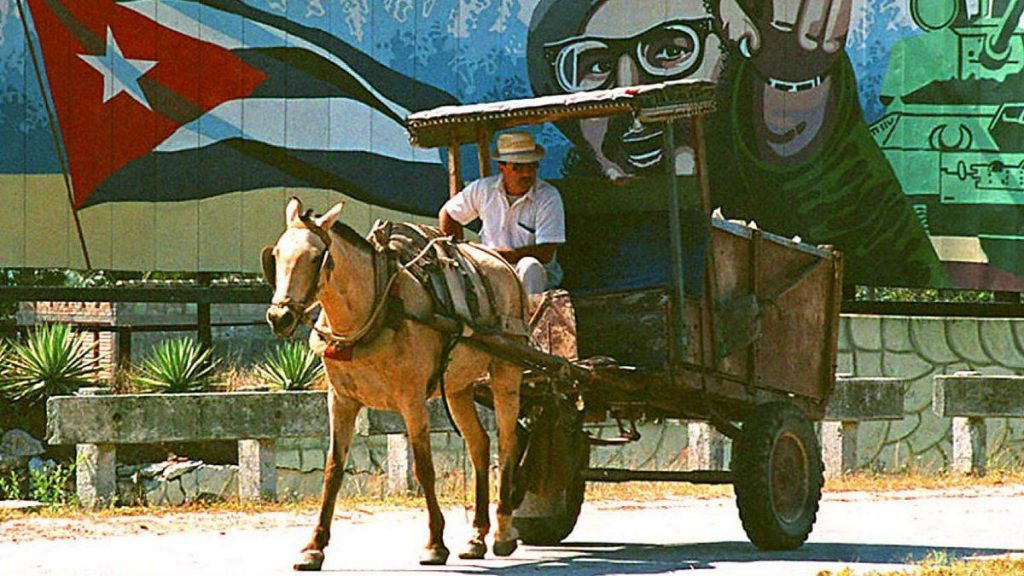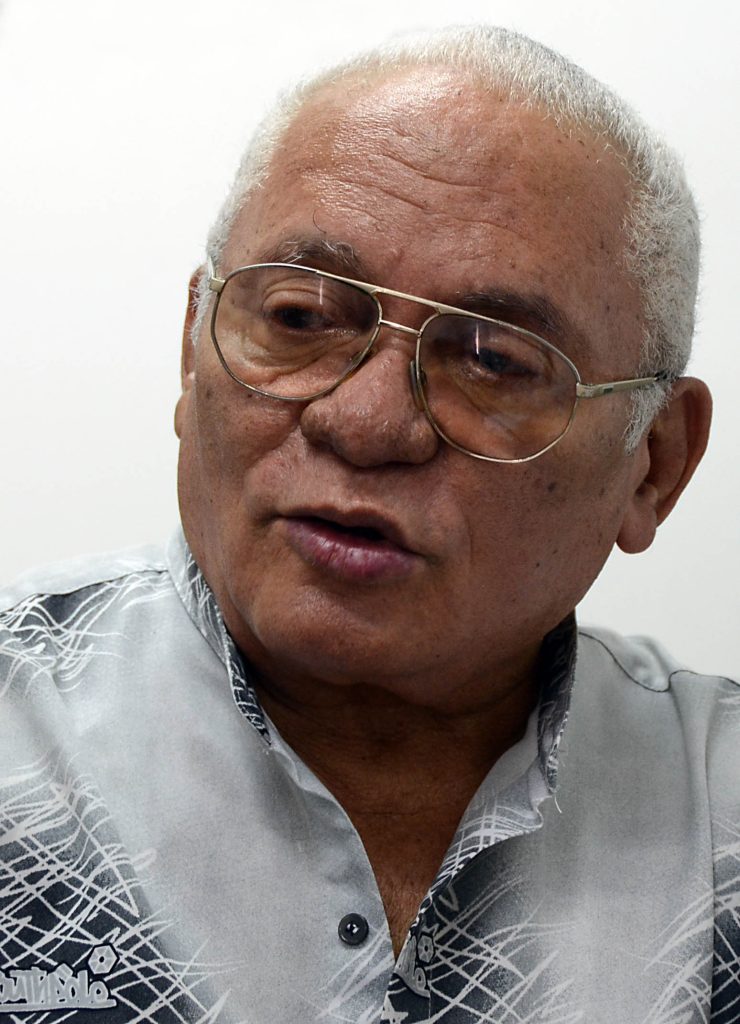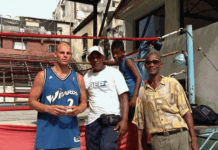
Cuba is currently facing what National Public Radio (NPR) called its worst economic crisis in decades, fueled by the U.S. blockade, diminished access to Venezuelan oil and the lingering effects of the COVID-19 pandemic.
Power cuts, due to the lack of oil supplies, are common and can sometimes last up to 8 hours. The shortage affects the food sector, making it increasingly difficult for Cuban households to find basic necessities.
The U.S. has sought to take advantage of this crisis by ratcheting up its blockade and financial war on Cuba, and inciting insurrection through the National Endowment for Democracy (NED), a CIA offshoot which supported groups that staged anti-government protests in July 2021.
Pedro Ross’s book, How the Workers’ Parliaments Saved the Cuban Revolution: Reviving Socialism after the Collapse of the Soviet Union (New York: Monthly Review Press, 2022), is timely in providing a blueprint for how the Cuban Revolution can reinvigorate itself today.


Ross was a teacher during Cuba’s great literacy campaigns of the 1960s who served three terms as General Secretary of Cuba’s Labor Federation, the Confederation of Cuban Workers, and was afterwards appointed as Cuban ambassador to Angola.
In the 1990s, he helped avert a national catastrophe by establishing workers’ parliaments where workers debated and developed solutions to the pressing economic crisis that resulted from the collapse of the Soviet Union and Socialist Bloc in 1991.
Ross compares the situation in which Cuba found itself after the collapse of the Soviet Union to that of a “house painter who suddenly has the ladder pulled out from under him and is left hanging.”[1]
Abruptly, Cuba suffered from an immense loss of supplies, markets and sources of financing, which the U.S. deliberately compounded by intensifying its blockade. Cuba’s Gross Domestic Product (GDP) fell by nearly 35% in what became known as the “Special Period” and the country lost more than 70% of its foreign markets.[2]
All of a sudden the Cuban Revolution—which had freed Cuba from U.S. neo-colonialism and had improved living standards considerably—was in jeopardy.

Cuba’s revolutionary government responded, among other ways, by a) developing non-traditional economic sectors, including tourism, biotechnology, communications, and information technology; b) promoting the bicycle as a means of public transport to offset the rising price and scarcity of fuel; c) promoting urban agriculture; d) trying to revitalize traditional economic sectors such as tobacco, coffee, seafood, sugar, and nickel, and e) establishing the workers’ parliaments in the summer of 1994, in which more than three million workers participated.

Working closely with Fidel Castro, the workers’ parliaments provided a platform for workers to relay their concerns and suggest solutions to economic problems, many of which were adopted.[3] Ross writes that “a fundamental principle of the workers’ parliaments was that the workers are the owners. Therefore, solutions should be based on labor consensus.”
More than 80,000 workers’ parliaments were held during the “Special Period” and 261,859 proposals were discussed. According to Ross, the workers were almost always selfless in putting the needs of the country ahead of their own. They developed plans for restructuring various industries, for boosting production and lowering costs, and helped in the development of national economic strategy. The parliaments were further significant in that they helped to build solidarity and enthusiasm for new projects and revitalized the Cuban Revolution.
Reading Ross’s account one is struck by the dichotomy between the popular demonology of Cuba as a totalitarian dictatorship in U.S. political discourse, and the radically democratic functioning of the workers’ parliaments.
Rooted in Cuba’s Revolutionary Tradition
The second half of Ross’s book provides a history of the Cuban Revolution whose democratic character the workers’ parliaments embody.
The history was rooted in resistance to Western colonialism, which started with Taino Chief Hatuey, who was burned at the stake by Cuba’s Spanish colonizers after waging a guerrilla war that preceded Castro’s rebellion by more than 450 years.
José Antonio Aponte drew on Hatuey’s legacy in leading a slave revolt in Havana in the 1800s, as did a Black woman named Carlota Lucumi who, in 1843, led a revolt against the Spanish at the Triunvirato sugar plantation in Matanzas.



In October 1868, Carlos Manuel de Céspedes, a planter from Manzanillo, issued a manifesto that triggered a 30-year independence struggle resulting in the end of Spanish colonial rule.
José Martí emerged as a key leader of the Cuban independence struggle against Spanish colonialism—inspiring Castro and his supporters fifty years later with anti-colonialism, anti-imperialism, internationalism, and a deep commitment to social justice.


Martí warned Cubans about the United States, who then covertly, during the Spanish-American war, sank their own ship, the USS Maine, as a pretext to intervene, dislodge the Spanish and then stay on as occupiers. After dividing Cuba into seven administrative areas, the first U.S. military governor oversaw the creation of a Cuban Rural Guard to protect the interests of big landowners and suppress dissent.

In February 1901, the U.S. Congress approved the Platt Amendment, which helped secure U.S. dominance over Cuba, including intervention rights, for the next half century.[4]
Cuba’s first president, Tomás Estrada Palma (1902-1906), entered into a treaty with the U.S. which gave the U.S. control over Cuban markets and set preferential customs rates for U.S. products with minimal benefits for Cuban exports.[5]


This accentuated an unequal exchange between the two countries and stagnation of Cuban agriculture and industry, which was only overcome following the triumph of 1959/1960 Cuban Revolution.

Ross concludes his book by writing that “we Cubans will keep striving to achieve a socialist society, prosperous and sustainable, based on a profound revolutionary conscience and sense of duty, by working with efficiency and efficacy, making the best, most rational use of our human and material resources.”[6]
Indeed, Cuba can serve as a model for the rest of humanity in its efforts to build a society guided by humane principles—in contrast to capitalist dystopias like the U.S. whose internal pathologies (high crime, homeless and suicide rates and vast inequality) and forever wars reflect a warped value system and unjust ruling structure.

-
Pedro Ross, How the Workers’ Parliaments Saved the Cuban Revolution: Reviving Socialism after the Collapse of the Soviet Union (New York: Monthly Review Press, 2022), 21. ↑
-
Ross, How the Workers’ Parliaments Saved the Cuban Revolution, 29. ↑
-
Ross, How the Workers’ Parliaments Saved the Cuban Revolution, 47. ↑
-
One of the stipulations was that the Cuban government would sell or lease to the U.S. lands deemed necessary for the establishment of coal mines and naval stations. ↑
-
Ross, How the Workers’ Parliaments Saved the Cuban Revolution, 104, 105. The treaty also gave the U.S. the right to military intervention which led to a second period of U.S. occupation from 1906 to 1909 when, Ross writes, “the Cuban Congress was suspended, the militias created by Estrada Palma were dissolved and U.S. supervisors were appointed for the Rural Guard. Misuse of public funds was common, and political and administrative corruption was pervasive. The Cuban Republic suffered from indebtedness and bribery…Public works projects were fruitful sources of embezzlement. Workers and their demands were repressed, and armed uprisings against the occupation were crushed.” ↑
-
Ross, How the Workers’ Parliaments Saved the Cuban Revolution, 153. ↑
CovertAction Magazine is made possible by subscriptions, orders and donations from readers like you.
Blow the Whistle on U.S. Imperialism
Click the whistle and donate
When you donate to CovertAction Magazine, you are supporting investigative journalism. Your contributions go directly to supporting the development, production, editing, and dissemination of the Magazine.
CovertAction Magazine does not receive corporate or government sponsorship. Yet, we hold a steadfast commitment to providing compensation for writers, editorial and technical support. Your support helps facilitate this compensation as well as increase the caliber of this work.
Please make a donation by clicking on the donate logo above and enter the amount and your credit or debit card information.
CovertAction Institute, Inc. (CAI) is a 501(c)(3) non-profit organization and your gift is tax-deductible for federal income purposes. CAI’s tax-exempt ID number is 87-2461683.
We sincerely thank you for your support.
Disclaimer: The contents of this article are the sole responsibility of the author(s). CovertAction Institute, Inc. (CAI), including its Board of Directors (BD), Editorial Board (EB), Advisory Board (AB), staff, volunteers and its projects (including CovertAction Magazine) are not responsible for any inaccurate or incorrect statement in this article. This article also does not necessarily represent the views the BD, the EB, the AB, staff, volunteers, or any members of its projects.
Differing viewpoints: CAM publishes articles with differing viewpoints in an effort to nurture vibrant debate and thoughtful critical analysis. Feel free to comment on the articles in the comment section and/or send your letters to the Editors, which we will publish in the Letters column.
Copyrighted Material: This web site may contain copyrighted material the use of which has not always been specifically authorized by the copyright owner. As a not-for-profit charitable organization incorporated in the State of New York, we are making such material available in an effort to advance the understanding of humanity’s problems and hopefully to help find solutions for those problems. We believe this constitutes a ‘fair use’ of any such copyrighted material as provided for in section 107 of the US Copyright Law. You can read more about ‘fair use’ and US Copyright Law at the Legal Information Institute of Cornell Law School.
Republishing: CovertAction Magazine (CAM) grants permission to cross-post CAM articles on not-for-profit community internet sites as long as the source is acknowledged together with a hyperlink to the original CovertAction Magazine article. Also, kindly let us know at info@CovertActionMagazine.com. For publication of CAM articles in print or other forms including commercial internet sites, contact: info@CovertActionMagazine.com.
By using this site, you agree to these terms above.
About the Author

Jeremy Kuzmarov holds a Ph.D. in American history from Brandeis University and has taught at numerous colleges across the United States. He is regularly sought out as an expert on U.S. history and politics for radio and TV programs and co-hosts a radio show on New York Public Radio and on Progressive Radio News Network called “Uncontrolled Opposition.”
He is Managing Editor of CovertAction Magazine and is the author of six books on U.S. foreign policy, including Obama’s Unending Wars (Clarity Press, 2019), The Russians Are Coming, Again, with John Marciano (Monthly Review Press, 2018), Warmonger. How Clinton’s Malign Foreign Policy Launched the U.S. Trajectory From Bush II to Biden (Clarity Press, 2023); and with Dan Kovalik, Syria: Anatomy of Regime Change (Baraka Books, 2025).
Besides these books, Kuzmarov has published hundreds of articles and contributed to numerous edited volumes, including one in the prestigious Oxford History of Counterinsurgency .
He can be reached at jkuzmarov2@gmail.com and found on substack here.










